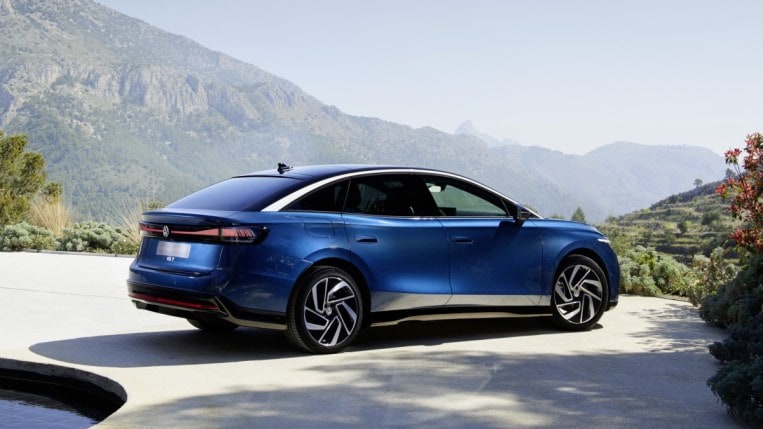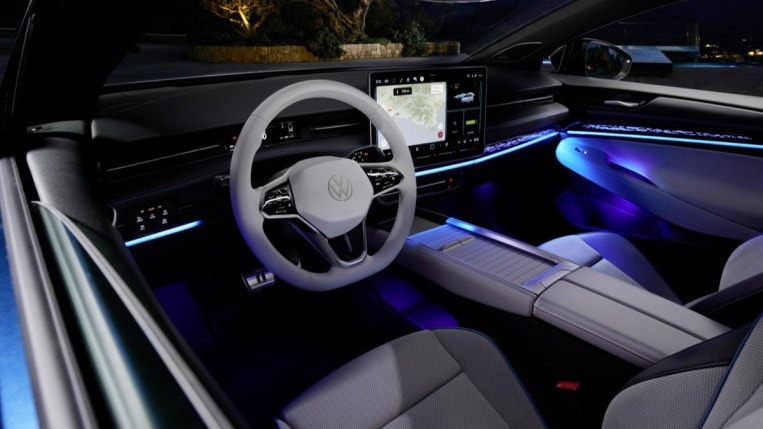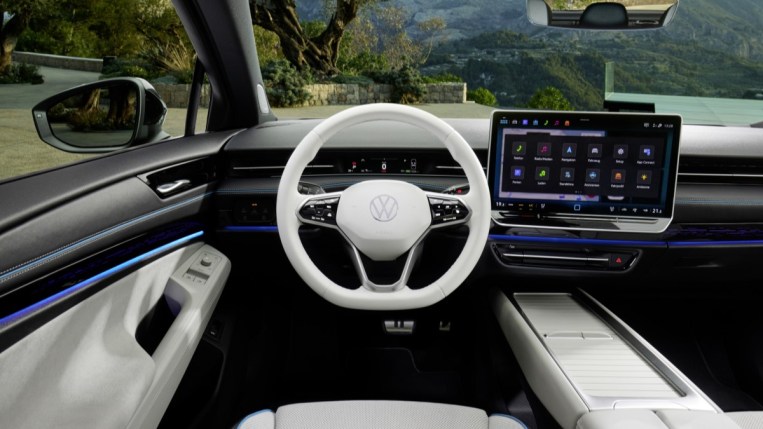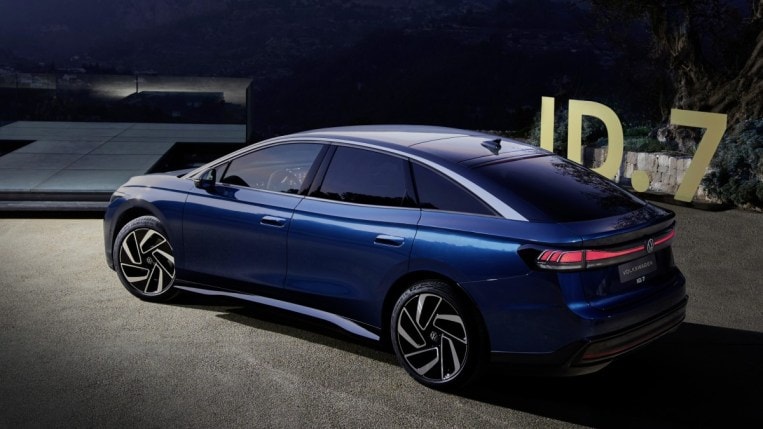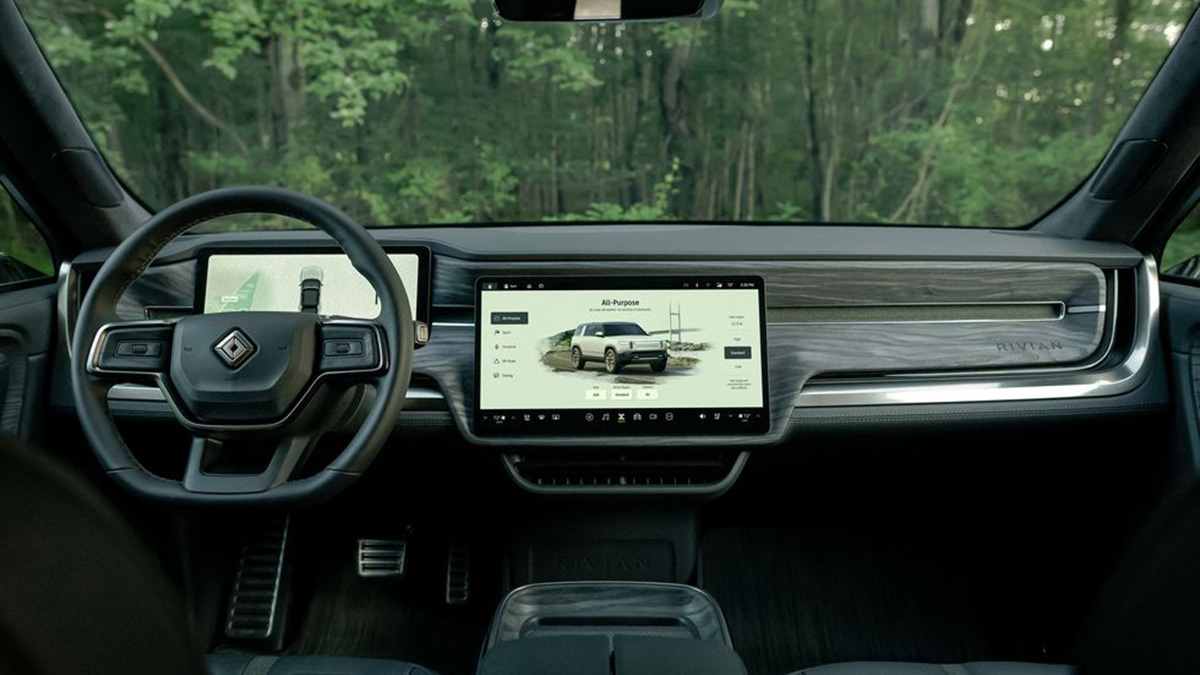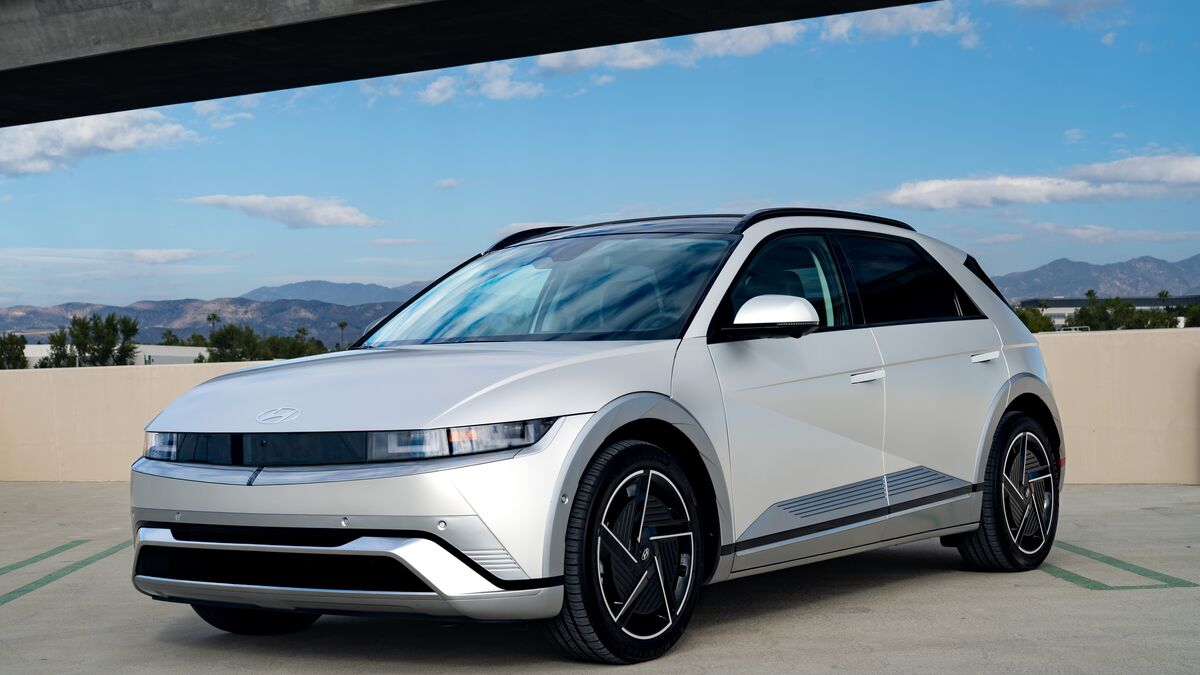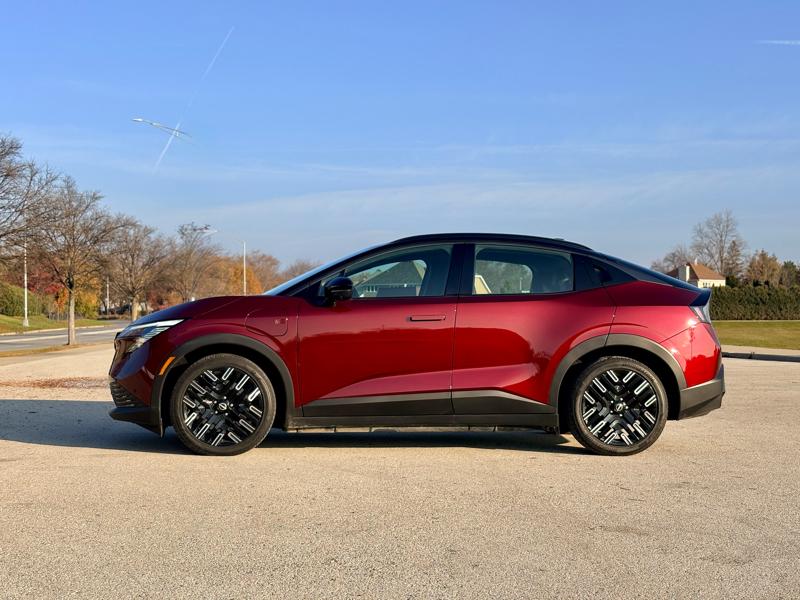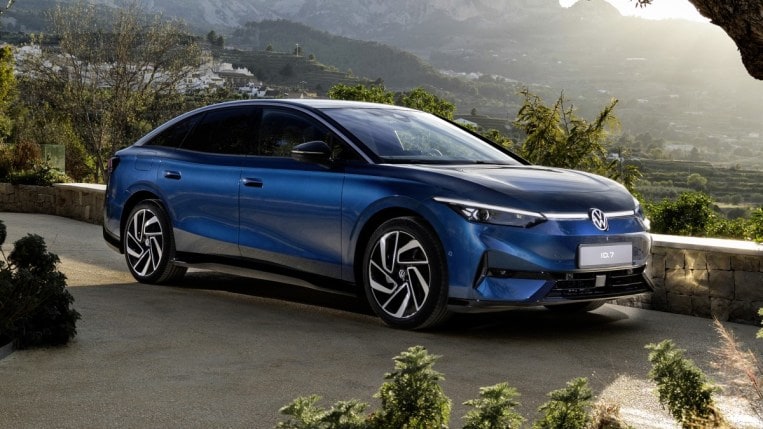
Underscoring the global importance of the vehicle, Volkswagen has unveiled the undisguised production version of the electric ID.7 sedan at simultaneous world premieres in Germany, China, and the U.S. The large 5-seat electric sedan goes on sale in Europe and China this fall, followed by the U.S. during the second half of 2024.
This is the sixth electric VW based on the company’s modular electric vehicle (MEB) platform. Like the upcoming ID. Buzz electric microbus, the VW ID.7 is built in Emden, Germany, which under current rules means it won’t be eligible for a U.S. federal tax credit.
How Big Is the ID.7?
At 195.1 inches, the Volkswagen ID.7 is a larger car than the discontinued Passat, though not quite as lengthy as the big Phaeton luxury sedan last sold in 2006. More significantly, the new ID.7 is about an inch longer than a Mercedes-Benz E-Class sedan, with a long 116.8-inch wheelbase helping to create outstanding interior room front and rear. Because the ID.7 has a rear-mounted electric motor and no transmission tunnel or driveshaft jutting up into the floorboard, this liftback 5-seater has an unusually spacious cabin with an open and airy feel.
Two Models (At First)
Volkswagen will build two versions of the ID.7. The standard model has a 77-kilowatt battery, a rear-mounted electric motor with 282 horsepower, and a targeted range of 300 miles. A model arriving later with a larger 86-kilowatt battery should go about 350 miles on a single charge. While we expect to see both ID.7 models eventually make it to the U.S., nothing has been confirmed at this early stage.
A spokesperson also told us to expect a 2-motor version at a later date.
Sleek Shape
Aerodynamics plays a key role in the ID.7’s good range. As such, the big electric VW liftback sedan has a super slippery shape with an impressively low overall drag coefficient of 0.23. The fastback roofline, as are the low hood, steeply raked windshield, and slightly tapered rear, is crucial here.
Also notable: The only front openings on the ID.7 are in the lower part of the nose. When cooling air is not needed, the central air inlet closes for better aero performance, and the side inlets route air around the front wheels for reduced turbulence. The flared side sills also contribute, preventing air from flowing under the smooth underbody of the ID.7. At the rear, a gloss-black diffuser under the bumper further aids airflow.
Classy Cabin
Don’t expect a typical instrument panel inside the VW ID.7 cabin. Instead, this big new electric VW has a surprisingly small digital panel in front of the driver, offering basic information like vehicle speed and a smattering of various required warning lights.
This is possible because all Volkswagen ID.7 models come standard with a head-up display that projects various information onto the back of the windshield. In addition to vehicle speed and handy info like posted speed limits, the HUD features augmented reality directional arrows to show you which way to turn when using the navigation system.
Other notable interior hardware inside the new Volkswagen ID.7 includes available massaging front seats with their own climate control systems, plus an electrochromic glass roof that can be switched from clear to tinted in an instant.
Understandably drawing most of the attention inside the ID.7 is the large centrally mounted 15-inch infotainment screen, which is far more powerful (and quicker-reacting) than the smaller screen used in the ID.4 electric SUV.
Of note, the landscape-oriented screen has two always-visible touch bars. The one across the top provides access to various apps and a Car Control Center that lets the driver configure the most critical vehicle functions. The one on the bottom provides access to the controls for the massaging, climate-controlled seats, and air conditioning. The latter, it should be noted, borrows a page from the long-discontinued VW Phaeton sedan by offering a draft-free interior with active vents.
Illuminated touch sliders control the ID.7’s interior temperature and audio volume. While we’re not typically enamored with these types of controls, instead preferring traditional knobs, the ID.7 has an IDA voice assistant that responds to vocal commands. For example, if the driver says, “Show me the stars,” the tinted panoramic sunroof automatically switches to its transparent setting. That’s pretty cool.
Electric Powertrain
The ID.7’s lithium-ion battery pack is sandwiched in the floor of the chassis. Thanks to more efficient winding and stronger magnets, the new electric motor produces 282 hp and 402 lb-ft of torque, making it the most powerful electric motor used in a VW ID model. It’s mounted between the rear wheels in a special module that contains a 2-stage single-speed gearbox and an inverter.
Volkswagen tells us a dual-motor all-wheel-drive model will come to the U.S. later. But the company hasn’t offered any specifics beyond saying it will get from 0 to 60 mph in the low 5-second range.
While we don’t have any specific information on charge times, we expect them to be good. VW says the 77-kWh battery pack in the standard ID Pro can be charged at up to 170 kW at a DC fast charging station, while the 86-kWh battery in the later-arriving ID.7 Pro S can be charged at 200 kW.
The Chassis
As a member of the MEB family, the VW ID.7 chassis has strut-type front suspension and a multilink rear axle, now employing special elastokinematic mounts that enhance ride comfort. Further improving the ride (and sportiness) is active suspension damping, which is standard on the ID.7 and is complemented by three selectable drive modes: Eco, Comfort, and Sport.
With so much of the ID.7’s weight being the vehicle battery mounted low in the chassis, we expect this new electric VW to handle with good composure on twisty roads, even if it’s not exactly positioned as a sport sedan.
Fun Facts
- The ID.7 doesn’t have a front trunk, or a frunk. With folding rear seats, the cargo area of the ID.7 becomes cavernous.
- The ID.7 is the first production VW equipped with a standard augmented-reality head-up display. VW says this makes classic instruments practically superfluous.
- All VW ID.7 models will have a black roof and a horizontal LED strip running between the LED Matrix headlights.
- A 700-watt Harman Kardon sound system with 14 high-end speakers (including a subwoofer in the luggage compartment) will be available as an option.
- The ID.7 has a new generation of front seats with up to 14 electrical adjustments. The available Climatronic seats use temperature and moisture sensors to control the climate of the seat accordingly. These seats have three modes: maximum heating, maximum ventilation, and maximum drying.
- The ID.7 front seats also have an available massage function. Via 10 air cushions in the backrest and two large air cushions in the seat area, these seats are designed to relax and activate the back muscles simultaneously.
How Much Will the New VW ID.7 Cost?
It’s too early to know what the VW ID.7 will cost when it arrives in the U.S. in late 2024 as a 2025 model. That stated, we’re expecting it to be somewhere between $45,000 to $50,000. While that may seem a bit steep, that’s considerably less than the 2023 Mercedes-EQ EQE sedan, a similarly sized German EV with a starting price of $74,900.
VW, you may recall, has bold plans to have EVs represent 80% of its total sales by 2030. Will the new ID.7 help lead this charge? While the ID.7 looks good on paper and in person, we can better answer that question as soon as we test drive this big new electric VW.
